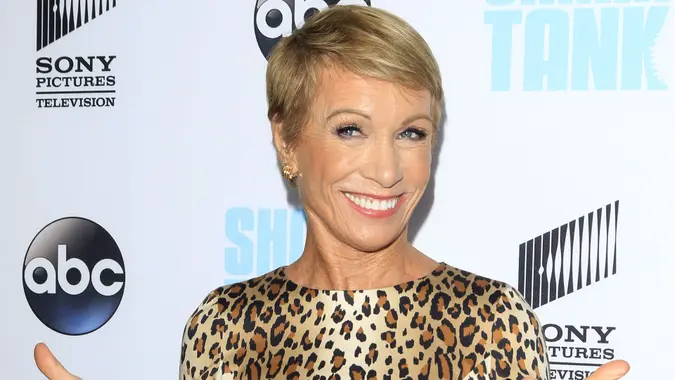When You Buy Stocks, Where Does Your Money Go & What Do You Own?

Commitment to Our Readers
GOBankingRates' editorial team is committed to bringing you unbiased reviews and information. We use data-driven methodologies to evaluate financial products and services - our reviews and ratings are not influenced by advertisers. You can read more about our editorial guidelines and our products and services review methodology.

20 Years
Helping You Live Richer

Reviewed
by Experts

Trusted by
Millions of Readers
If your money sits idle in a savings account, it’s doomed to spend its life losing value to the relentless nibbling of inflation. If you put it to work in the stock market, on the other hand, there are risks, but over time you can grow a small pile of money into a big pile of money.
The Economy and Your Money: All You Need To Know
Find Out: Dividends: What Are They & Why Are They Important to Your Investment Strategy?
But where, exactly, does that money go?
Most people start a stock transaction by transferring money from a checking account linked to their brokerage account. You have to have a brokerage account if you want to buy and sell stocks and other securities. But when you spring for a slice of Apple or Amazon or your favorite ETF, you get a share — an ownership stake in a publicly traded company — but what happens to the money you paid to acquire it?
Read on to find out.
See: Do You Know the Differences Between the Stock Exchanges?
Consider: What Are IPOs and Are They Worth Investing In?
When You Buy Stock Through an IPO, Your Money Goes To the Company Going Public
If you buy stock through an initial public offering (IPO), it’s a fairly simple exchange. You, the buyer, pay the company issuing the shares whatever price it charges for a slice of the business. Although the investment bank that organized the IPO takes a cut for administrative fees, it works much the same way as any other purchase — the buyer trades money for a product or service to the company doing the selling.
Companies use IPOs to raise money as they make the transition from being privately controlled businesses to publicly traded companies. Successful IPOs deliver massive cash infusions that the issuing company uses to hire employees, build new plants, develop new products, and grow and expand the business. Both new companies and well-established companies use IPOs to gin up cash this way.
Important: The Inverted Yield Curve and Why It Matters
Either way, according to the Economic Times, the company that issues the IPO is not under an obligation to repay the money it receives from investors. Once the IPO is complete, the shares that investors like you purchased from the company going public become part of the open market. They can then be bought and sold on the secondary market.
Be Aware: How Earnings Estimates Impact Your Investments
The Secondary Market: Where People, Not Companies, Pursue Their Fortunes
Once a company creates, issues and sells shares to investors through an IPO, those shares exist in the realm of the secondary market, which is what most people think of as the “stock market.” That’s where investors buy and sell shares they already own to and from other investors — not the issuing entity — on exchanges like the Nasdaq composite and the New York Stock Exchange.
If you own stock and didn’t participate in an IPO, you purchased your shares on the secondary market. Unlike IPOs, money spent in secondary market transactions doesn’t go to the company that issued the shares. It goes instead to the investor who sold them to you.
The big stock exchanges like the NYSE work like auctions — they’re actually called “auction markets” — where the highest price a bidder is willing to pay is matched with the lowest price a seller is willing to accept.
Good To Know: What Happens When a Brokerage Firm Doesn’t Have Enough Capital To Cover Trades?
Read: How Interest Rates Affect Your Wallet and the Bigger Economic Picture
Once Inside the Secondary Market, Your Money Can Never Escape
People talk about “pulling their money out of the market” or “harvesting gains.” The truth is, the secondary market is kind of like Hotel California — you can sell shares any time you like, but once your money finds its way to the secondary market, it can never leave.
Here’s a simple example:
- Investor 1, Investor 2 and Investor 3 all start with $1,000.
- Investor 1 buys a share of stock for $100 from Company A during its IPO, leaving Investor 1 with $900 and a share of stock.
- When the price of Company A stock rises by $10 per share, Investor 1 harvests their gains by selling their share to Investor 2 for $110.
- Investor 1 now has $1,010 and no shares, Investor 2 has $890 and one share and Investor 3 still has $1,000 and no shares.
- Suddenly, Company A tanks and its shares lose half their value.
- Fearing the worst is yet to come, Investor 2 sells their share to Investor 3 at a loss for $55.
- Investor 1 still has $1,010 and no shares, Investor 2 now has $945 and no shares and Investor 3 also has $945 — plus one share of Company A stock.
Money was gained and lost as the value of Company A changed, but throughout the ups and downs, money never entered or left the secondary market.
This article is part of GOBankingRates’ ‘Economy Explained’ series to help readers navigate the complexities of our financial system.
More From GOBankingRates
- 101 Easy Ways To Save Money Daily
- The 8 Best Deals From Costco’s September Coupon Book
- 5 Bulk Food Items You Need To Be Buying at Costco This Fall
- The Hidden Costs of Education at Every Level
 Written by
Written by  Edited by
Edited by 

























